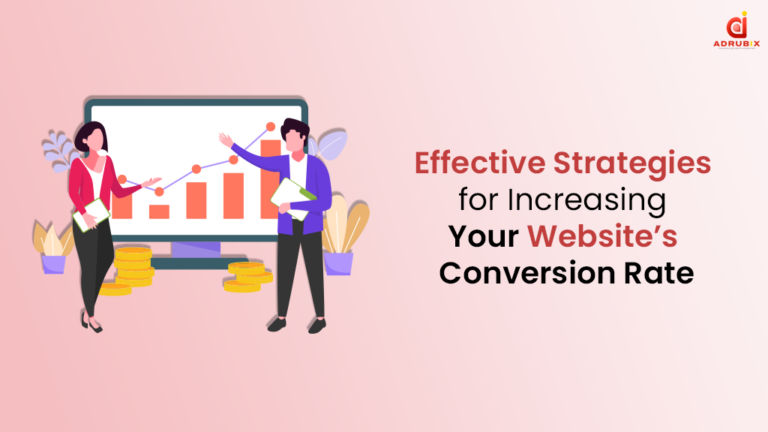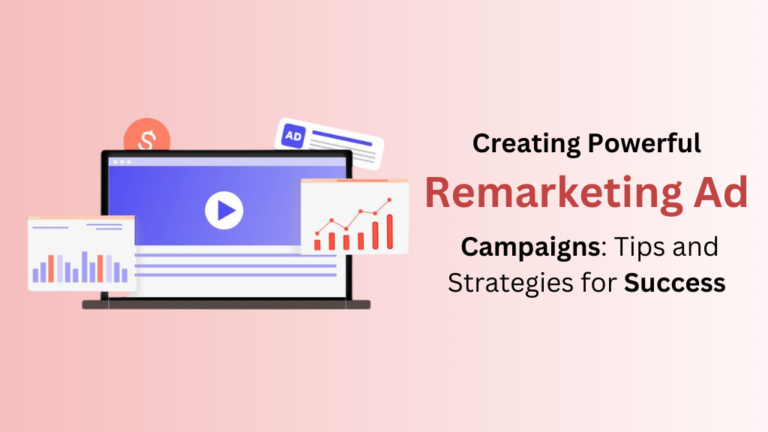In the competitive world of digital marketing, driving traffic to your website is only half the battle. The ultimate goal is to convert that traffic into leads, sales, or whatever key action aligns with your business objectives. Achieving a high conversion rate is crucial to boost the return on your investment in online marketing. In this blog, we will explore various digital marketing strategies and website strategies that can significantly boost your website conversion rate and turn visitors into customers.
1. Understand Your Audience
Before implementing any website conversion rate strategy, it’s essential to understand your target audience. Knowing who your visitors are, what they are looking for, and what motivates them to take action will enable you to tailor your website to meet their needs. Start by inspecting your website analytics and customer data to gather insights on user behaviour. Tools like Google Analytics can help you identify the demographics, interests, and browsing patterns of your visitors.
2. Improve Your Website for Mobile Users
With an increasing number of users accessing websites from mobile devices, ensuring your website is mobile-friendly is no longer optional. A responsive design that adapts to different screen sizes can prevent potential customers from bouncing off your site due to poor user experience. Additionally, mobile optimization involves fast loading times, intuitive navigation, and easy access to key information, which are all critical components of a successful website conversion rate strategy.
3. Improve Page Load Speed
Page load speed is a crucial factor that can make or break your website strategies for conversion. Slow-loading pages frustrate users and lead to higher bounce rates. According to studies, even a one-second delay in page load time can result in a significant drop in conversions. To improve your website’s load speed, consider enhancing images, leveraging browser caching, and using a content delivery network (CDN).
4. Create Compelling and Relevant Content
Content is king when it comes to converting visitors into customers. Your content should be engaging, informative, and aligned with the needs and interests of your target audience. Use persuasive copy, high-quality images, and videos to capture attention and build trust. Incorporating clear calls-to-action (CTAs) within your content can guide users towards taking the desired action, whether it’s signing up for a newsletter, downloading a resource, or making a purchase.
5. Simplify the Navigation
A cluttered or confusing navigation can hinder users from finding the information they need, leading to frustration and abandonment. Simplifying your website’s navigation structure is a key website strategy that can enhance the user experience and increase conversions. Ensure that your menu is intuitive, categories are clearly labelled, and essential pages like product pages, contact forms, and pricing details are easily accessible.
6. Use Social Proof
Social proof, such as customer testimonials, reviews, case studies, and trust badges, can significantly influence the decision-making process of potential customers. Displaying social proof on your website builds credibility and reassures visitors that others have had positive experiences with your brand. Including user-generated content, like customer photos or videos, can also add authenticity and encourage conversions.
7. Leverage A/B Testing
A/B testing is an effective website conversion rate strategy that allows you to compare two versions of a webpage or element to determine which performs better. By testing different headlines, images, CTAs, layouts, and other variables, you can identify what resonates most with your audience and refine your website accordingly. A/B testing is an ongoing process that enables continuous improvement and optimization of your conversion rate.
8. Implement Live Chat Support
Providing instant support through live chat can address visitor concerns in real-time and reduce the chances of them leaving your website without converting. Live chat allows users to ask questions, clarify doubts, and receive personalised assistance, which can be particularly valuable for complex products or services. Integrating live chat as part of your digital marketing strategies can help you capture leads and drive conversions.
9. Optimise Your Call-to-Action (CTA) Buttons
Your CTA buttons play a crucial role in guiding users toward conversion. To enhance your CTAs, ensure they are prominently placed, clearly visible, and compellingly worded. The language used should be action-oriented, creating a sense of urgency or highlighting the benefit of taking the next step. Experimenting with different colours, sizes, and placements can also help you determine the most effective design for your CTAs.
10. Use Retargeting Campaigns
Retargeting is a powerful digital marketing strategy that allows you to re-engage visitors who have left your website without converting. By displaying targeted ads to these users as they browse other websites or social media platforms, you can remind them of your offerings and encourage them to return to complete their purchase. Retargeting campaigns can significantly improve your conversion rate by keeping your brand top of mind and nudging potential customers towards taking action.
11. Simplify the Checkout Process
For e-commerce websites, a complicated or lengthy checkout process can lead to cart abandonment and lost sales. Simplifying the checkout process is a critical website strategy for boosting conversions. Reduce the number of steps required to complete a purchase, offer guest checkout options, and reduce form fields to make the process as quick and hassle-free as possible. Additionally, providing multiple payment options and ensuring a secure checkout experience can further enhance conversion rates.
12. Use Exit-Intent Popups
Exit-intent popups are triggered when a user is about to leave your website, offering one last chance to convert them into a lead or customer. These pop ups can include special offers, discounts, or lead magnets like eBooks or free trials to entice users to stay and take action. While popups should be used sparingly to avoid annoying visitors, they can be an effective website conversion rate strategy when implemented thoughtfully.
13. Inspect and improve Regularly
Continuous analysis and optimization are essential components of any successful website strategies. Regularly reviewing your website’s performance, user behaviour, and conversion metrics will help you identify areas for improvement. Tools like heatmaps, session recordings, and analytics dashboards provide valuable insights into how users interact with your site and where they may be encountering obstacles. By staying proactive and making data-driven decisions, you can consistently enhance your website’s conversion rate.
Conclusion
Increasing your website’s conversion rate requires a combination of effective digital marketing strategies and thoughtful website strategies. By understanding your audience, optimising your site for mobile users, improving page load speed, and implementing tactics like A/B testing, social proof, and retargeting, you can create a user-friendly experience that encourages visitors to take action. Remember that conversion optimization is an ongoing process, and regular analysis and refinement are key to achieving long-term success.
Investing time and resources into these strategies will not only improve your conversion rate but also enhance the overall user experience, leading to greater customer satisfaction and loyalty. Start implementing these strategies today and watch your website’s performance soar!





